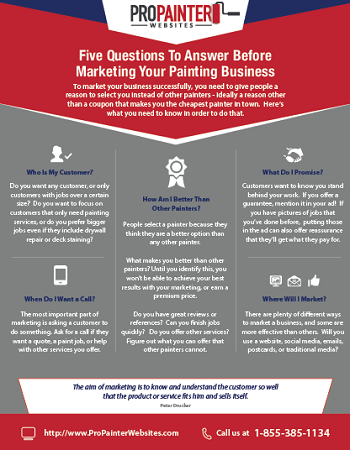Examine The Duty Of Seasonal Factors In The Success Of Business Exterior Painting And Discover The Best Times To Secure Long-Term Results For Your Job
Examine The Duty Of Seasonal Factors In The Success Of Business Exterior Painting And Discover The Best Times To Secure Long-Term Results For Your Job
Blog Article
Write-Up Created By-Korsholm Rodriquez
When you're planning an industrial external painting job, seasonal factors can make or break your outcomes. You'll intend to think about just how temperature level and humidity influence paint application and drying times. Selecting the right season can guarantee your paint sticks appropriately and lasts longer. However which seasons are genuinely the most effective for this sort of job? Allow's discover the crucial elements that can influence your job's success.
The Influence of Temperature Level on Paint Application
When you're intending a commercial exterior painting task, the temperature can significantly influence how well the paint adheres and dries out.
Ideally, you want to paint when temperatures range between 50 ° F and 85 ° F. If it's too cold, the paint might not cure correctly, resulting in issues like peeling off or breaking.
On the other hand, if it's also warm, the paint can dry out too quickly, stopping correct bond and causing an unequal coating.
You ought to also think about the moment of day; early morning or late afternoon uses cooler temperatures, which can be a lot more positive.
Always check the producer's referrals for the details paint you're utilizing, as they often supply guidance on the perfect temperature level variety for ideal results.
Moisture and Its Effect on Drying Times
Temperature isn't the only ecological variable that affects your business exterior painting job; moisture plays a substantial function also. High humidity degrees can slow down drying out times dramatically, impacting the general quality of your paint task.
When the air is filled with wetness, the paint takes longer to cure, which can bring about issues like bad adhesion and a greater threat of mildew growth. If you're repainting on an especially moist day, be prepared for extended delay times between layers.
mn painting contractor to check local climate condition and plan as necessary. Preferably, go for humidity levels in between 40% and 70% for optimal drying.
Maintaining these consider mind guarantees your job remains on track and delivers a long-term coating.
Best Seasons for Commercial Outside Painting Projects
What's the most effective time of year for your commercial exterior paint jobs?
Springtime and early autumn are generally your best bets. During these periods, temperatures are mild, and moisture levels are usually lower, producing excellent problems for paint application and drying out.
Stay why not try this out of summer season's intense heat, which can trigger paint to completely dry also promptly, causing inadequate bond and finish. In a similar way, winter's cool temperature levels can hinder appropriate drying out and curing, running the risk of the durability of your paint job.
Go for days with temperatures between 50 ° F and 85 ° F for ideal outcomes. Keep in mind to check the local weather prediction for rain, as damp conditions can ruin your task.
Planning around these variables ensures your painting project runs smoothly and lasts longer.
Conclusion
To conclude, planning your industrial exterior paint tasks around seasonal factors to consider can make a substantial difference in the outcome. By organizing job during the ideal temperature levels and moisture levels, you'll make sure far better bond and drying out times. Remember to keep an eye on local weather prediction and choose the correct time of year-- springtime and very early autumn are your best choices. Taking these steps will certainly help you attain a sturdy and specialist coating that lasts.
